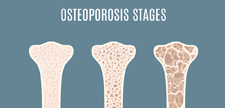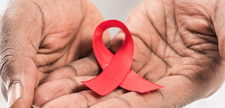
Menstrual health is an essential aspect of women's health that often goes underappreciated. For immigrant and refugee women in particular, managing menstrual health presents unique challenges. Cultural differences, language barriers and limited resources all contribute to these challenges.

I came to medicine from the world of ballroom dancing. While I knew that my stethoscope would be joining me far more often than my dance shoes, what I did not expect was how many lessons from the ballroom world would shape my learning and working in the clinical space. So many of the cardinal rules of ballroom dancing, also known as partner dancing, apply to medicine.

Pregnant people in the United States have many options when it comes to planning what their labor and delivery experience looks like. Common options include home delivery, various types of delivery centers and the hospital. In the United States and other western countries, hospital deliveries have largely become the default. Each option comes with its own benefits and downsides.

Period poverty is the lack of accessibility or affordability of menstrual hygiene tools and educational material, such as sanitary products, washing facilities and waste management.

Many mothers would agree that the process of childbirth is not an easy experience. The body goes through physical, psychological and emotional changes. One of the most common problems that women face after childbirth is postpartum depression (PPD).

Osteoporosis is a common disease that results in bone weakening and increased fracture risk. Its prevalence is higher in women than men and has continued to increase in women from 2007–2008 to 2017–2018 according to the CDC.

Pregnant women are at risk of developing another type of depression called postpartum depression (PPD). The symptoms for postpartum depression and major depressive disorder are the same, with the exception that postpartum depression develops within a year of giving birth or within the last trimester of pregnancy.

Pregnancy is a unique period in a person’s life. During these 40 weeks, the body goes through many changes and adjustments to nurture the fetus growing inside. One common complaint, present in about 50-80% of pregnant patients, is low back and/or pelvic pain. As the patient gains weight, the center of gravity is shifted forward which increases the forces applied to the lower back. Back pain has also been correlated with increased levels of relaxin which is a hormone produced by the corpus luteum and uterine decidua.

In the landscape of women's health, the Pap smear stands as a robust diagnostic tool, particularly vital in the prevention of cervical cancer. This article explores the complexities of Pap smears, highlighting their pivotal role in early detection and underscoring the nuanced influence of public policies in broadening accessibility to these screenings.

The health benefits of breastfeeding for both mother and infant have been well-touted for years. Based on these undeniable benefits, the American Academy of Pediatrics recommends exclusive breastfeeding for the first six months of life and continuation of breastfeeding until two years of age or beyond, a recent revision from the previous recommendation of continued breastfeeding for the first year of life or longer.

Uterine fibroids, also known as leiomyomas, are the most common benign (noncancerous) tumors made of smooth muscle and connective tissue that develop in the myometrium layer of the uterus. They are the most common pelvic tumors among women of reproductive age, affecting more than 70% of women worldwide.

HIV is criminalized when people who are HIV positive can face criminal charges for engaging in acts not considered criminal if done by a person who is HIV negative.

Intrauterine devices (IUDs) are an increasingly popular choice for contraception. There are two types: hormonal (which contain progestin, a form of progesterone) and non-hormonal, made with copper. You can discuss with your health care provider which one is best for you.

For far too long disparities in the health care system, whether it was race, socioeconomic class or gender identity, have had a major impact on patients. Today we still see disproportionate measures when it comes to cancer and how it is diagnosed and treated. Breast cancer is the most common non-cutaneous cancer, with hundreds of thousands of new cases each year. Due to the increase in early detection and more effective treatments, the overall mortality rate due to breast cancer has decreased over the years.

During my Women’s Health Education Program (WHEP) elective, I had the privilege of spending a month learning from international board-certified lactation consultants and caring for lactating parents at St. Christopher’s Hospital for Children. As a medical student, I knew only that chest feeding led to better health outcomes. However, what I now know is that U.S. parents who chest feed tend to be of higher socioeconomic statuses, be disproportionately white, and have job flexibility, social support, low stress levels and higher levels of education.